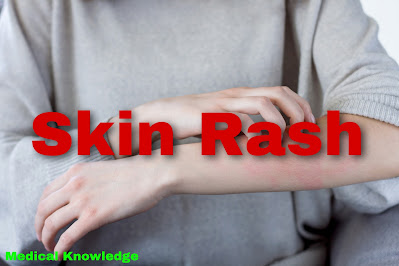A skin rash is a common skin condition that can affect people of all ages and backgrounds. It can be caused by a variety of factors, including allergies, infections, medications, and autoimmune disorders. In this article, we will discuss the basics of skin rashes, including their causes, symptoms, and treatments.
Causes of Skin Rashes:
Skin rashes can be caused by a variety of factors, including:
1 - Allergies: Allergic reactions to foods, medications, and other substances can cause a skin rash.
2 - Infections: Skin infections such as bacterial, fungal, and viral infections can cause a rash.
3 - Medications: Some medications can cause a skin rash as a side effect.
4 - Autoimmune disorders: Autoimmune disorders such as lupus and psoriasis can cause a skin rash.
5 - Environmental factors: Exposure to certain environmental factors such as heat, cold, or sun can cause a skin rash.
Symptoms of Skin Rashes:
The symptoms of a skin rash can vary depending on the underlying cause of the rash. Common symptoms include :
1 - Redness: The affected area of skin may appear red and inflamed.
2 - Itching: The rash may be itchy or painful.
3 - Scaling: The skin may become dry and scaly.
4 - Blisters: Some rashes may produce blisters or other types of skin lesions.
5 - The affected area of skin may become swollen or puffy.
Treatments for Skin Rashes:
The treatment of skin rashes can vary depending on the underlying cause of the rash. However, some general measures that can be taken include:
1 - Keep the affected area clean and dry.
2 - Avoid scratching or picking at the rash, as this can make it worse and lead to infection.
3 - Apply cool compresses or take cool baths to soothe the skin.
4 - Use over-the-counter creams or ointments to relieve itching and inflammation, such as hydrocortisone cream or calamine lotion.
5 - Avoid using harsh soaps or detergents, and wear soft, loose clothing.
6 - Take oral antihistamines to relieve itching and swelling.
If the rash is caused by an infection, such as ringworm or impetigo, a doctor may prescribe an oral or topical antibiotic or antifungal medication.
If the rash is caused by an allergic reaction, the allergen should be identified and avoided in the future. In some cases, a doctor may prescribe oral or topical corticosteroids to reduce inflammation and itching.
It is important to see a doctor if the rash is severe, covers a large area of the body, is accompanied by other symptoms such as fever or difficulty breathing, or does not improve with home treatment.
When to See a Doctor:
In most cases, a skin rash is not a cause for concern and can be treated with over-the-counter or home remedies. However, in some cases, a skin rash may be a sign of a more serious underlying condition. It is important to see a doctor if:
1 - The rash is widespread or covers a large area of the body.
2 - The rash is accompanied by other symptoms such as fever or joint pain.
3 - The rash is painful or does not improve with treatment.
4 - The rash is accompanied by difficulty breathing or swelling of the face or tongue, which could indicate a severe allergic reaction.
Preventing Skin Rashes:
While not all skin rashes can be prevented, there are steps that can be taken to reduce the risk of developing a skin rash. Some tips for preventing skin rashes include:
1 - Avoiding exposure to known allergens: If you have a known allergy, avoiding exposure to the allergen can help prevent a rash.
2 - Practicing good hygiene: Keeping the skin clean and dry can help prevent skin infections that can cause a rash.
3 - Wearing protective clothing: Wearing protective clothing, such as long sleeves and pants, can help prevent exposure to environmental triggers such as sun and heat.
Conclusion:
A skin rash is a common condition that can be caused by a variety of factors. It can be acute or chronic, localized or generalized. The management of a skin rash depends on the cause and severity of the rash, but general tips include identifying the cause, keeping the affected area clean, using moisturizers and over-the-counter creams, taking antihistamines, and seeking medical attention if necessary.

